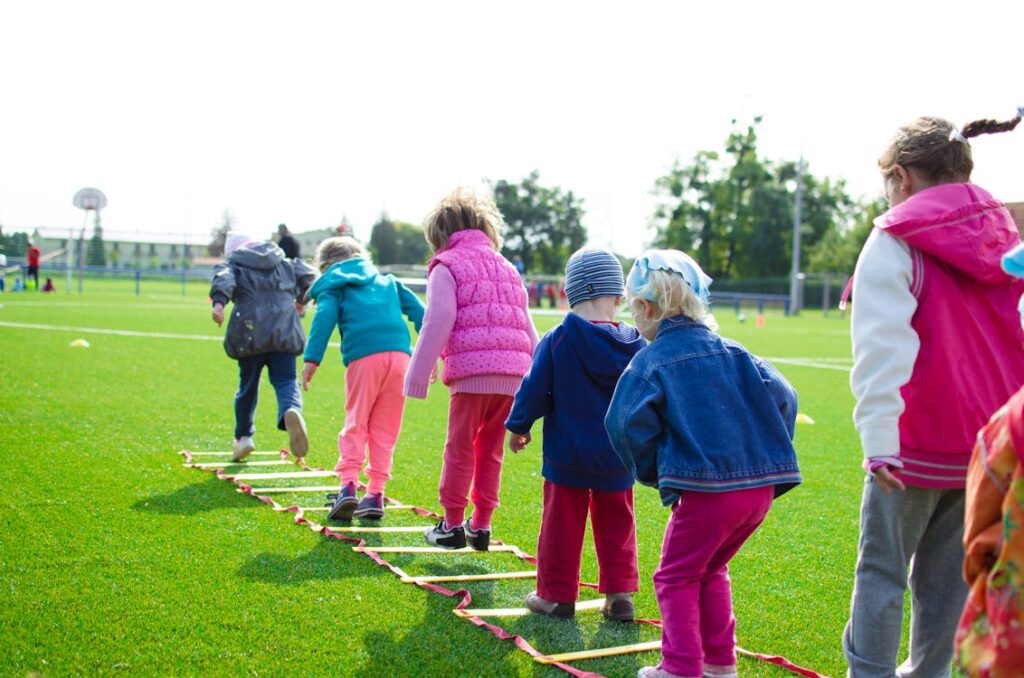
Raising children in the twenty-first century is challenging. Social media and other technologies greatly influence their everyday lives. Therefore, a strong wellness foundation is among the most crucial things to impart to children for their development and healthy lives. The benefits of wellness activities for kids go beyond just immediate enjoyment. Children have better social skills, balanced emotional fortitude, and improved physical strength with these.
Research has proven that children participating in wellness programs tend to have higher academic success rates, are more socially considerate, and enjoy better mental health. Engaging in wellness activities with children is the most entertaining method of serving their emotional and physical needs. The community, parents, and schools can collaborate to inculcate these wellness habits in kids from a young age.
Now, let’s enter the world of wellness! This blog reveals a variety of fun and intriguing wellness activities for kids across all boards. We have also discussed how these are applied in school, home, and community settings.
Wellness Activities for Kids: All Types
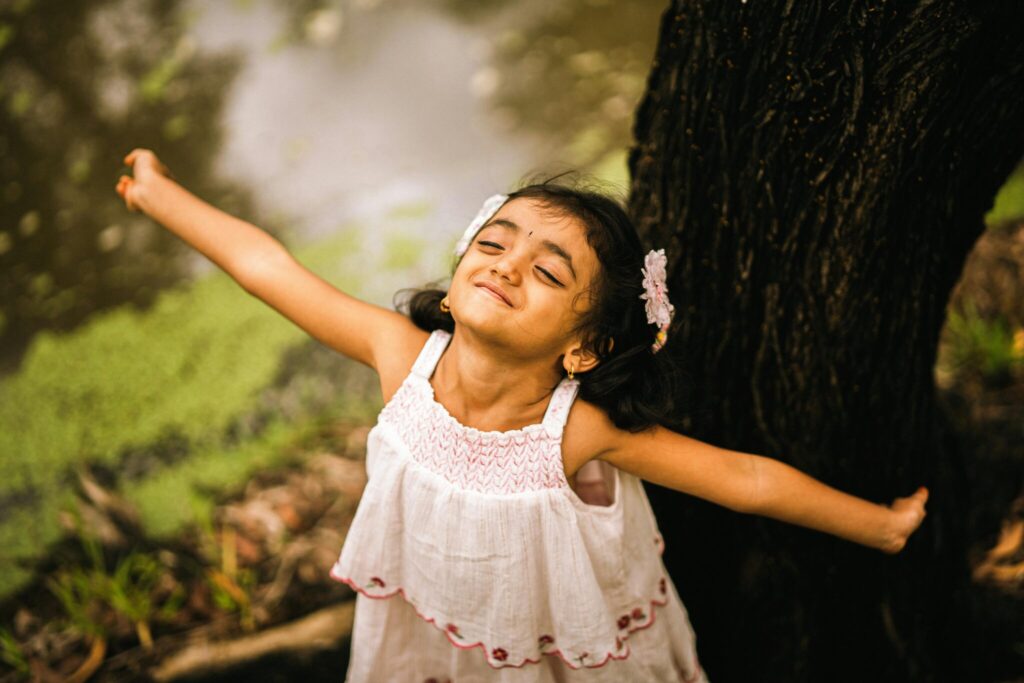
Here are some fun and effective wellness activities for kids that you can incorporate into your child’s routine:
Physical Wellness Activities
Physical wellness activities play a significant role in better health and development in children. A few of the physical wellness activities are listed below.
1. Active Outdoor Play
Encourage outdoor activities like playing tag games, running, and leaping. Children who take part in physical play develop strength, and coordination, and burn off excess energy to maintain an active healthy life.
2. Sports and Games
Engage your child in games, like tennis or swimming, or any team sport such as basketball, volleyball, or soccer. These activities develop resilience, and social skills while encouraging discipline, teamwork, and physical health in children.
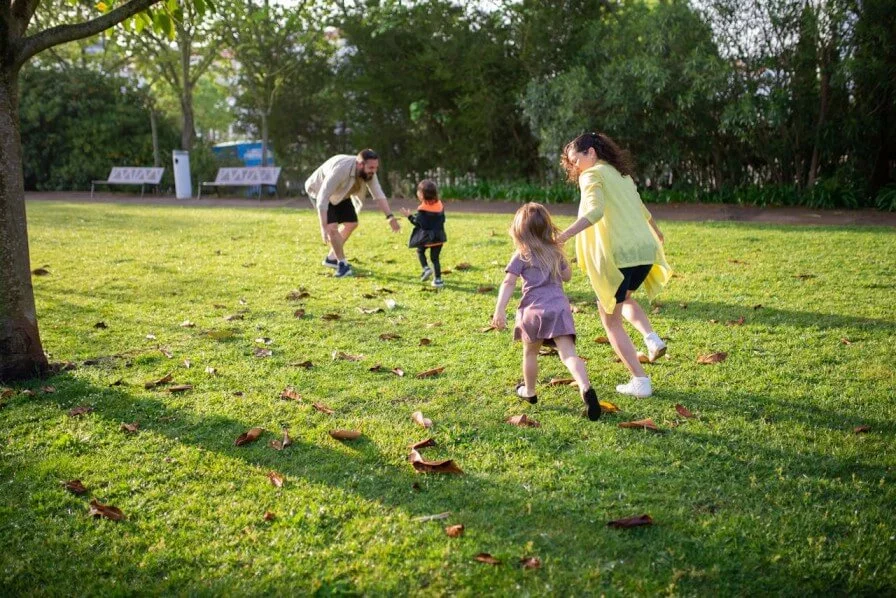
3. Dance and Movements
Dancing to their favorite music at home or in a structured class is also an excellent form to practice physical wellness activities for kids. Dancing enhances cardiovascular health and flexibility, apart from improving coordination, self-expression, and confidence.
4. Yoga and Mindfulness
Children develop increased flexibility and can experience relaxation and focus through the practice of yoga. Yoga with mindfulness practices could foster emotional well-being.
5. Martial Arts
It includes various techniques of taekwondo or karate, which simultaneously provide training for self-defense, discipline, and respect for others with enhanced physical fitness. Such exercises are helpful for kids to gain more focus and confidence, improve their physical strength, and teach them important life skills.
Activities for Emotional Well-being
Emotional wellness activities provide emotional resiliency in children, which is an essential ability that would help them sail through the challenges of life. Following are some of the best kid-friendly emotional wellness activities.
6. Mindfulness and Meditation
It is quite helpful to teach children how to rest their minds through mindfulness and meditation. This lays a very good foundation for emotional intelligence and self-regulation skills.
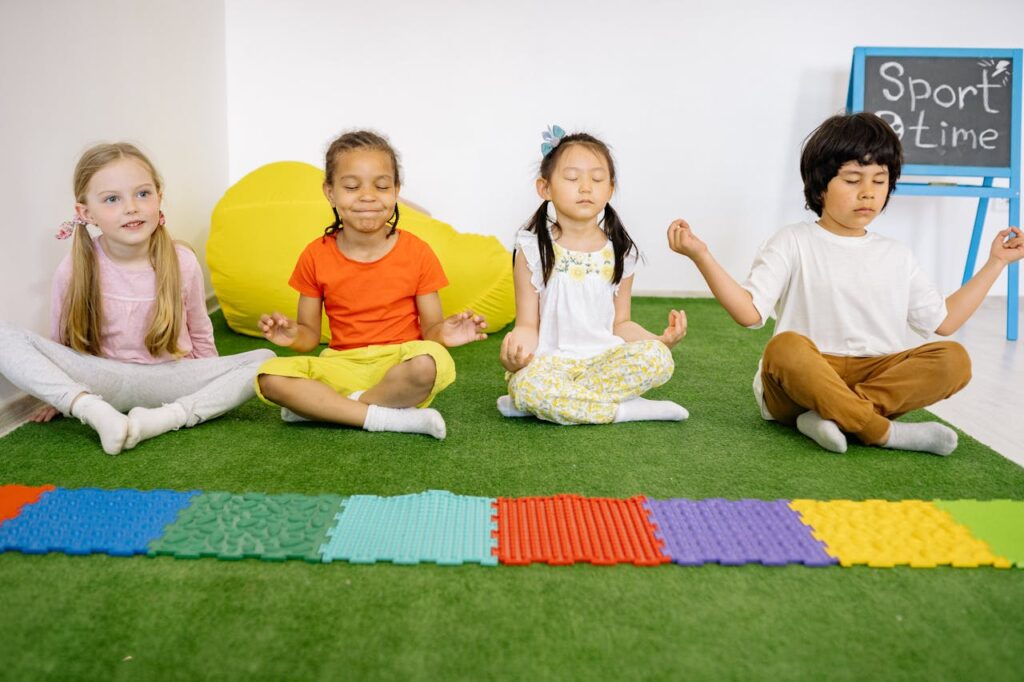
7. Art and Creativity
By painting, drawing, and other means of creative expression, children can express themselves non-verbally in healthy ways.
8. Music
Learning to play an instrument or the simple ability to listen to music can allow kids to relax, experience happier moments in their day, and even concentrate more clearly.
9. Journaling
Children benefit from journaling as it gives them insight into themselves and helps them articulate their feelings. Journaling is proven to enhance self-awareness and emotional strength.
10. Nature Stay Time
When children spend time in nature, they become detached from daily hassles, are mentally refreshed, and feel calm. All these aspects are helpful for their mental well-being.
Group Wellness Activities for Kids to boost Well-being
Through group activities, children can learn about empathy, social well-being, and cooperation. Here’s how you may promote children’s group wellness activities.
11. Family Outings
Plan family outings to nearby parks, museums, or zoos to spend quality time with your family and give them lasting memories. Children are exposed to new experiences, and ideas while raising their sense of wonder and adventure.
12. Community Events
Fairs, festivals, and charity walks are great ways to meet and interact with neighbours and learn about the local way of life. Community activities help kids develop social skills, and a sense of belonging, towards the community.
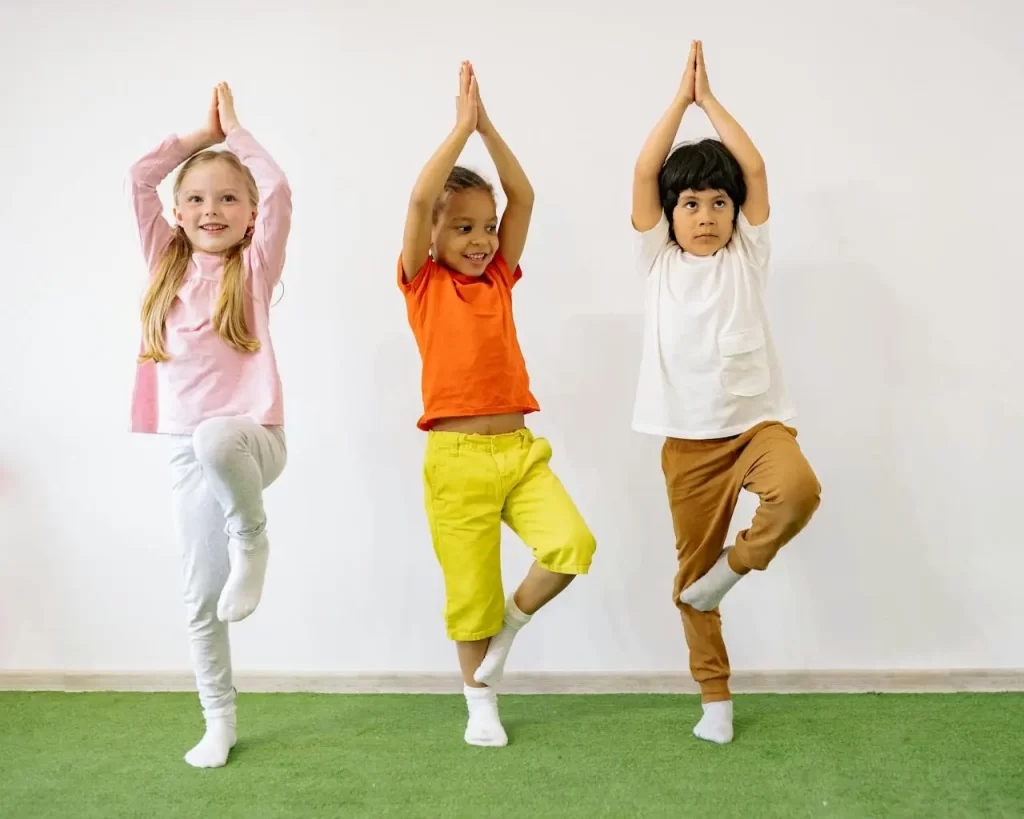
13. Peer Playdates
These should be arranged so that children can interact with their peers and make friends. In such casual atmospheres, they learn how to cooperate, empathize, and take initiative in a playdate.
14. Family Game Night
Playing games together develops relationships within the family, encourages a bit of healthy competition, and even helps kids develop strategies and critical thinking.
Age-Specific Wellness Activities
Based on the requirements of each development phase in children’s development cycle, here are some best-recommended activities that are defined for specific age groups.
Preschooler Wellness Activities
Simple activities like dancing, singing, and playing with toys are highly suitable for preschoolers. Such activities allow the face of freedom and imagination and develop children’s motor skills, coordination, and rhythm. According to studies, early exposure to music and physical activity can enhance social interaction and language development.
Wellness activities for toddlers also include simple art projects, reading, and playing outdoors. Outdoor play allows exploration and discovery of things around them, builds basic muscle strength, and balances important factors for physical growth and development. While art projects allow children to express their feelings and stimulate creativity, reading aloud together fosters language skills and bonds while promoting cognitive and emotional development.
Primary School Wellness Activities
For Primary school children, more frequent physical education should be planned to instill a long-term love for staying fit, boosting stamina, and strengthening cardiovascular health. Sports develop social and teamwork skills, while art projects enhance creativity and problem-solving skills. Meditation and Mindfulness activities can help them stay calm and focused while outdoor physical activities burn off excess energy to maintain a balanced lifestyle.
Secondary School Wellness Activities
These include team sports, yoga, and meditation which offer mental and physical exercises to help secondary school students meet their developmental needs. Yoga and meditation will provide an opportunity for stress management, increasing concentration, and resilient skills at the most vulnerable stage of life. While team sports promote teamwork, leadership skills, and physical development.
Wellness Wednesday Activities for All Ages
A day of every week should be dedicated to taking care of oneself in care initiatives. All ages can have this dedicated day or a few hours on a specific day to involve them in wellness activities as per their age. Introducing the concept of Wellness Wednesday helps children develop a habit of keeping some time in their schedule for self-care and wellness activities. In such a competitive world, this habit can help them live a balanced life in their present and also when they are adults.
Winter Wellness Activities for Kids

While winter brings unique challenges that require creative solutions, wellness activities for kids are useful year-round.
15. Challenges of Indoor Fitness
While winter may render outdoor activities, kids can still be active indoors by engaging in fitness challenges or mini-yoga sessions. Activities such as “indoor treasure hunts” provide a blend of fitness and problem-solving skills as children get to move around in search of hidden items.
16. Art Therapy
Children can also practice winter wellness through art. They can express their feelings through different art activities, such as painting or craftwork. Research shows that children’s emotional well-being is increased by involving in art, especially during winter when they tend to be less active in any outdoor activities.
17. Wellness Corner
Create a “wellness nook” with books, yoga mats, and other tools for relaxation in your home. Let kids spend some time each day doing yoga, reading, or simply relaxing. A wellness nook is a good way to remind oneself daily of the need to carve out time for self-care.
18. Sleep Schedule
A good sleep schedule is a must for children as it promotes emotional well-being. Sleep helps with keeping a good mood, memory, and attention. Relaxed music, writing in the gratitude diary, or reading bedtime stories help the children fall asleep and sleep well.
Benefits of Wellness Activities
Wellness programs for kids result in lowered anxiety, good academic performance, and high self-esteem. Some of the benefits of wellness can be examined below:
- Improved Energy and Physical Fitness: Wellness activities help kids maintain physical fitness and keep their energy throughout the day.
- Enhance mental well-being and reduce anxiety: More frequent engagement in wellness activities bolsters mental health due to reduced depressive and anxious symptoms.
- Improve Academic Performance and Cognitive Skills: Wellness activities build cognitive skills in terms of memory and concentration, hence leading to improved academic performance.
- Encourage teamwork and social interaction skills: Group wellness activities encourage teamwork and communication and develop pragmatic teamwork skills.
- Support body positivity and confidence: Children who are part of a fitness program will develop confidence and a good self-concept, which enables them to appreciate and take good care of their bodies.
- Improves Sleep Quality: Physical fitness in children ensures they sleep correctly during the night. They can control the sleep-wake cycle or circadian rhythm through exercise. Proper quality sleep is vital for growth and memory consolidation. It controls mood for general well-being.
- Increased creativity with more problem-solving potential: Music and art activities create and allow the full development of problem-solving abilities. Once children get the green light to express themselves freely and to think more creatively, such activities bring great enrichment to intellectual and emotional development.
Final Takeaways
Wellness activities for kids are pretty important to bring forth a wholesome lifestyle that contributes to overall well-being.
It’s a balance, achievable for schools, homes, and communities by threading the day with fitness activities, and emotional wellness practices. The simple ideas in this blog from “Wellness Wednesday” in the schools to sensory play for toddlers offer a broad base of ways to address multiple dimensions of wellness. These wellness habits serve as foundational tools on the path toward health and happiness for children while growing up. By embracing these wellness activities, children won’t simply grow but learn to thrive in all aspects of life.
FAQs
What activities support children’s emotional well-being?
Activities supporting children’s emotional well-being include mindfulness exercises, art and creative play, journaling, spending time in nature, and activities that encourage open communication (like sharing circles or storytime). These help children process their emotions, express themselves, and build mental and emotional strength and resilience.
What are some healthy activities?
Healthy activities range from physical activities like walking, running, and yoga to mental exercises like meditation, reading, and learning new skills. These activities promote an overall sense of wellness and help one maintain a balanced lifestyle.
What is a well-being activity?
A well-being activity is any activity designed to improve physical, mental, or emotional health. Examples are: practicing gratitude, meditation, socializing with friends, engaging in hobbies, and practicing relaxation techniques. The beauty of these activities is that they are intended to improve a person’s quality of life and promote a sense of fulfillment and happiness.
What are mental health activities for kids?
Mental health activities for kids can include mindfulness exercises, breathing techniques, playing games that encourage teamwork, journaling, and practicing gratitude. These activities help children learn to manage their emotions and build coping skills for dealing with stress.
What are mental wellness activities?
Mental wellness activities are exercises that support a healthy mind and emotional balance. These can include mindfulness practices, journaling, regular physical activity, engaging in hobbies, practicing gratitude, and connecting with others. Mental wellness activities are designed to reduce stress, improve mood, and promote a positive mindset.
References:
- Promoting 21st Century Health and Wellness Skills in Elementary School Children, Springer Nature Link, Patrick H. Tolan, Alexis R. Harris, Margaret Burchinal & Patricia A. Jennings
- Centers for Disease Control and Prevention (CDC). (2023). Physical activity for kids. April 3, 2024
- Harvard Health Publishing. (2022). Yoga for school-age children. January 29, 2016
- Mayo Clinic. Children’s Center, how exercise benefits the body and mind, Jennifer O’Hara, July 8, 2022
- National Sleep Foundation. (2023). Sleep and its impact on child development. Danielle Pacheco (Staff Writer), Dr. Nilong Vyas (Pediatrician)
- Child Mind Institute. The impact of wellness programs on children’s mental health Rosa Klein-Baer

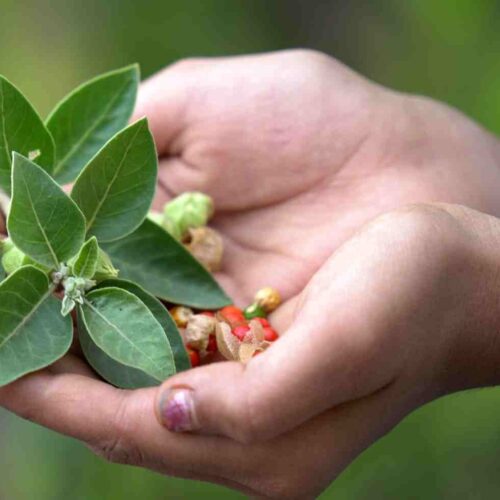

Leave a Reply